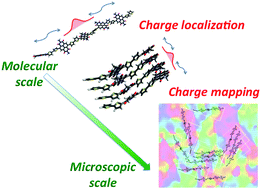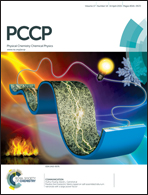Multi-length-scale relationships between the polymer molecular structure and charge transport: the case of poly-naphthalene diimide bithiophene
Abstract
Charge transport in organic polymer semiconductors is a complex phenomenon affected by structural and electronic properties ranging over different length scales, from the molecular one up to the macro-scale. Charge carriers show markers of spatial localization (polarons), and drift for distances from a few to 100 μm in typical field-effect devices. Being sensitive to such different length scales, field-effect mobility is evidently a figure of merit that averages local properties at the molecular scale, over distances orders of magnitude larger. Understanding charge transfer processes at each length scale is consequently of paramount importance. To fulfill this aim, a multi-length-scale approach, encompassing experimental and theoretical modeling investigations, has to be built. Here we critically revise a series of experimental and theoretical tools that can contribute to develop a consistent multi-scale investigation methodology. We consider them within the study of an exemplary, good electron transporting naphthalene-diimide bi-thiophene copolymer, which has represented a breakthrough for the class of n-type polymers since its disclosure in 2009.


 Please wait while we load your content...
Please wait while we load your content...